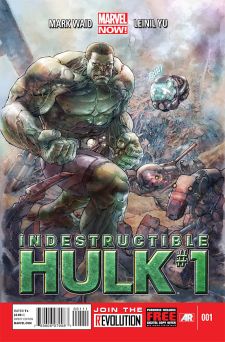Now, this was not my first experience with Frank Miller on Daredevil. I've read reprints of the classic Elektra storyline, which saw Matt Murdock's college sweetheart returning to the states as a lethal assassin after some years away. The story never really stayed with me, perhaps in part because its shock ending was already common knowledge among fans at the point in time in which I read it. Its outcome may have felt like a thunderclap in monthly bursts, but in one sitting, knowing what would happen and the fall out from it, it definitely lost some of its impact.
"Born Again," on the other hand, felt more like the crackling Frank Miller I knew - prone to lengthy, rich character monologues and a dun-dun-dun rhythm to his fiction that is as deliberate as a beating drum. It's an adult story, one where Daredevil's former lover-turned-druggie-hooker sells him out and the lawyer sees his entire life turned upside down by arch-enemy, the Kingpin. He loses his law practice, his friends, his identity, and his sanity, only to hit a personal rock bottom and rise like a phoenix at the end (albeit a broken one). Liberties would have to be made to adapt it properly to film, but the central conflict is certainly deep enough that it would make a great foundation for a killer DD script.
It was really good. I now started to get a sense of why Daredevil had his fans and what made Daredevil tick, and how Miller's Murdock and Waid's Murdock could be the same guy, but certainly at different points in the lawyer's complicated life. Murdock is defined as a fighter, a lot of times with quite literal symbolism whenever they flashback to anything involving his prize-fighting father. Miller took that will to fight to its extreme in "Born Again;" Waid plays with it as a kind of tenacity. When Murdock is faced with a challenge wherein any logical person would think, "this is too big for me," the thought never seems to enter Murdock's mind. He's going to figure it out, defeat it, solve the problem, or it's just never going to happen at all. Murdock probably doesn't even realize how motivated he is by the old saying, "If you want something done right, you've got to do it yourself." It's an important variation on Spidey's "Great Power" philosophy, (but close enough to ensure that those two heroes get along very well).
These two things - Waid's monthly and "Born Again" - were important, but they weren't the clincher. I've talked about the Sidekick Store before. It's a place here in Austin that offers thousands of back issues for just a buck apiece, and it's a great way for a comic fan on a budget (ME) to feel like a king with just a ten-dollar bill. Over a couple of visits, I picked up a smattering of Daredevil back issues - Denny O'Neil's interesting, relaxed follow-up to Frank Miller's classic run and Ann Nocenti's super-wacko existential Daredevil run with John Romita Jr, on art (a run that teams him up with Gorgon from the Inhumans for several issues and eventually has Daredevil standing up to Marvel's version of Satan, Mephisto). They were never, ever boring. This is important, because when you're just choosing back issues from the 1980s at random from a box, you come across more stinkers than winners. Even as off-putting as Nocenti could get, she was doing stuff that was unpredictable and gonzo (as gonzo as Marvel got in their superhero books, anyway), but never dull. Daredevil quickly became a title that I could feel confident snagging from the discount bins and knowing I'd always be in for a good time.




















